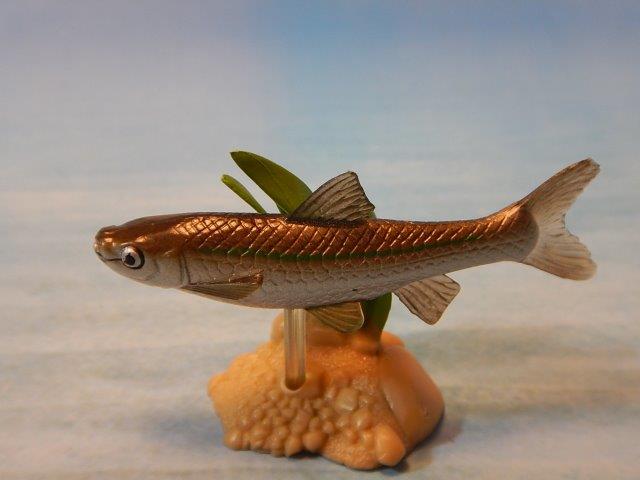
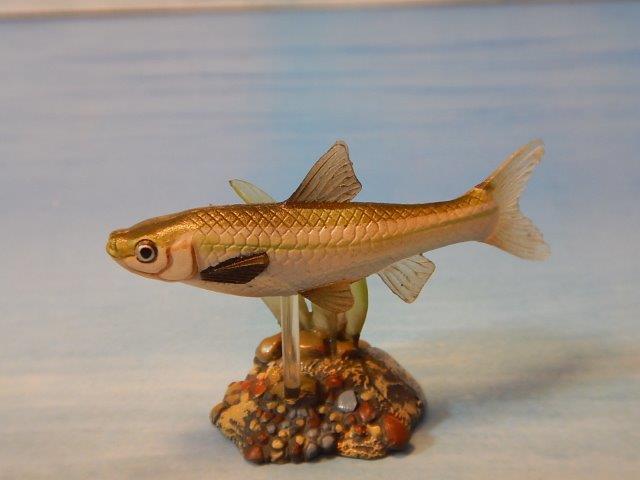

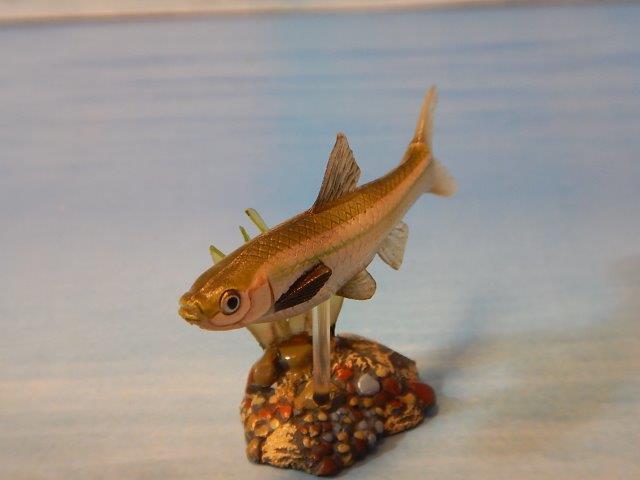
This figure is the Willow Shiner (or in Japan, Honmoroko), Gnathopogon caerulescens, model 18 and number 3 in the second series. At the original time of writing, this was one of two species out of the whole series that I didn’t have. Then I was able to get both versions at once…
Note: with two versions, I am putting up photos as side-by-side ‘galleries; with release 1 (darker coloured) on the left, release 2 on the right.
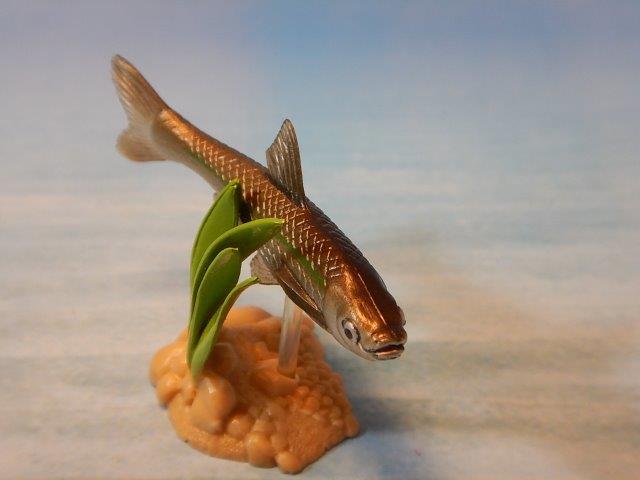

The Willow Shiner is a medium-sized minnow, part of the carp family. They are part of a Eurasian subfamily (Gobioninae–but they aren’t at all related to gobies) comprised of a wide range of species. Although referred to as a shiner, that name name usually refers to a number of North American cyprinds (related, but different).
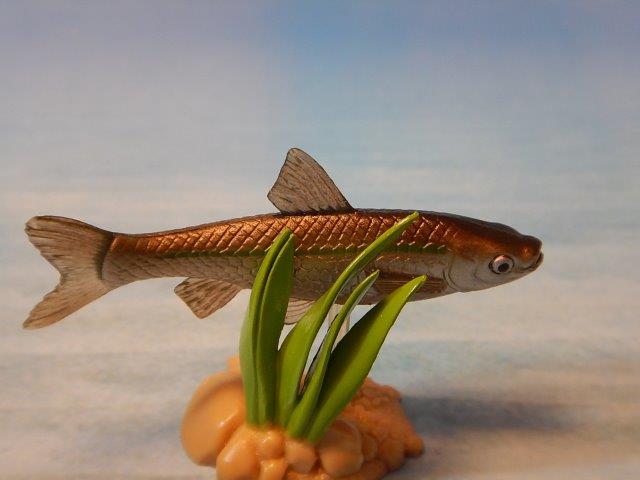

This particular species is originally endemic to Lake Biwa in Japan, but has been released in other waters as they are popular food fishes. Unfortunately, this popularity lead to overfishing in Lake Biwa (at one point, catches were several hundred tonnes–current catches are 1/10 of that), leading the Japanese environment ministry to list them as critically endangered, although the IUCN lists them as Endangered. The apparent scarcity unfortunately drove up the prices of the fish to luxury-food levels, which probably didn’t help. They are mid-water hunters in marshes and lakes, feeding on plankton, insects and other small swimming organisms. The Yujin model gives a length of 14cm, which is close to the 15cm I found elsewhere.
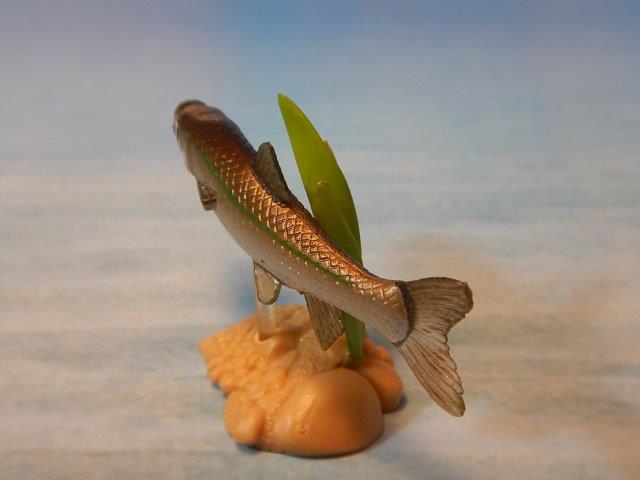
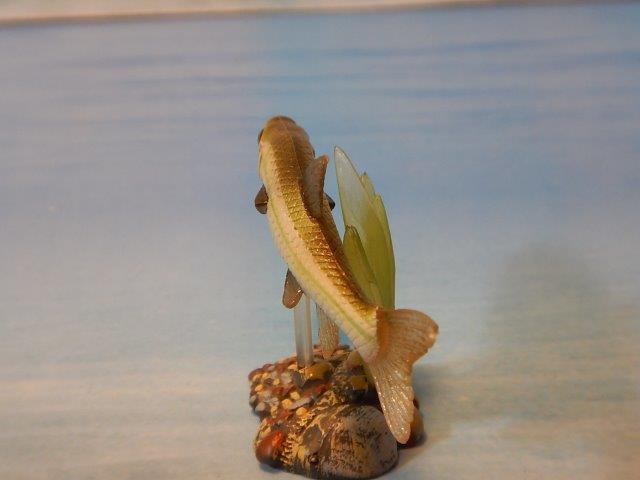
This model measures 5cm long, giving a scale of 1:3. The two models are similar but not exactly the same in colour—this is the first time I have had the same model from both releases to compare. The Second release version is lighter overall, with a light, shiny copper dorsal colour with a distinct cream coloured side and belly. The lateral line is marked by a thin green stripe from the gill to the base of the tail, this line is bordered top and bottom by the cream colour. Most fins are nearly transparent, with light brown along the fin rays. The pectoral fins are an exception, being somewhat translucent but painted a dark brown overall. The scales are large and deeply sculpted. The eyes are large and light golden, with big black pupil.
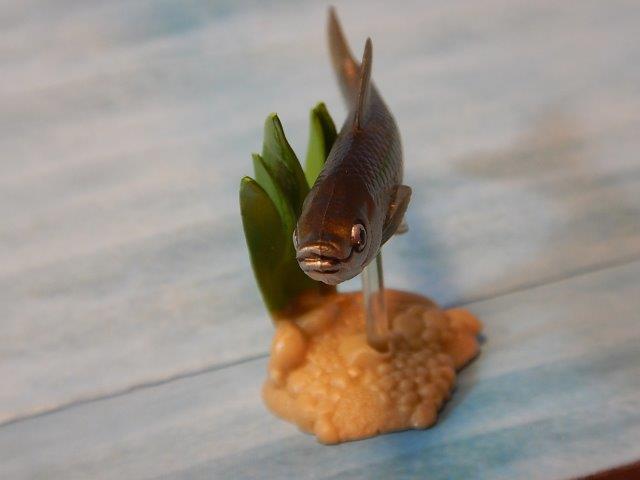
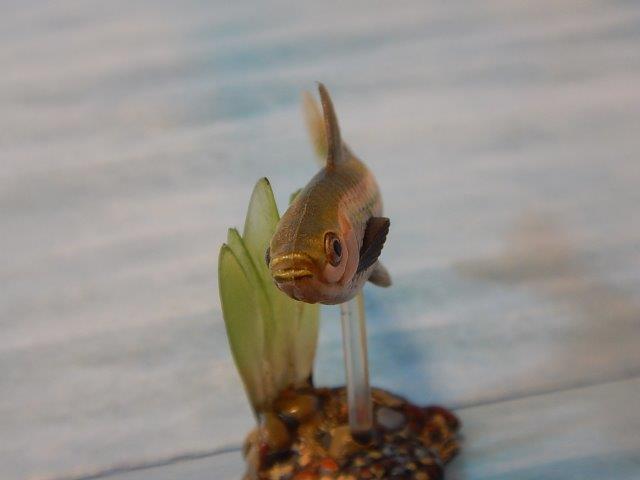
The First Release figure is very similar, with some subtle differences. First, the dorsal colouration is a much darker copper colour, and extends all the way to the lateral line. The sides and ventral surface are a little darker. The green lateral line stripe is a darker green than the Second Release, and does not extend to the base of the tail. All of the fins, including the pectoral, are the transparent material, with dark brown along the fin rays. The eyes are more silvery, with the same dark black pupil.

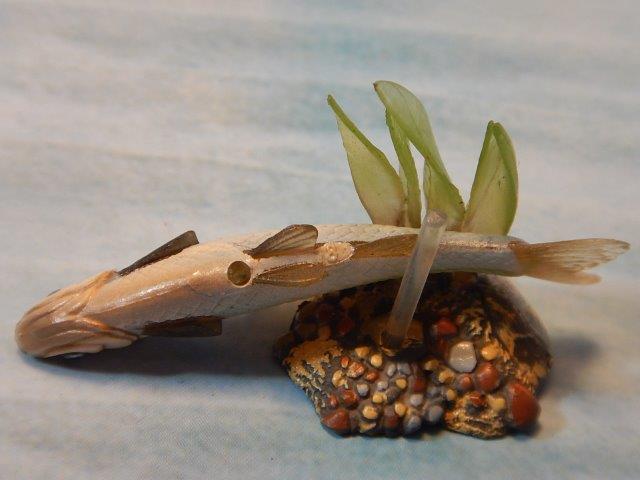
Overall, the differences are subtle but become clear. The paint job on the second release model is more defined and detailed, and this may be true of the two lines overall (I only have one other to definitively compare at this point). EDIT–over the years, I have obtained a number of first-release versions to compare with my second-release versions, and overall this is indeed true; those will be seen in forthcoming posts. The First Release version came to me on the brown gravel-with-plant base; the Second Release is on the same base, but the gravel is painted in various colours, which is usually reserved for secret figures. The willow shiner is certainly not a secret figure by any means.
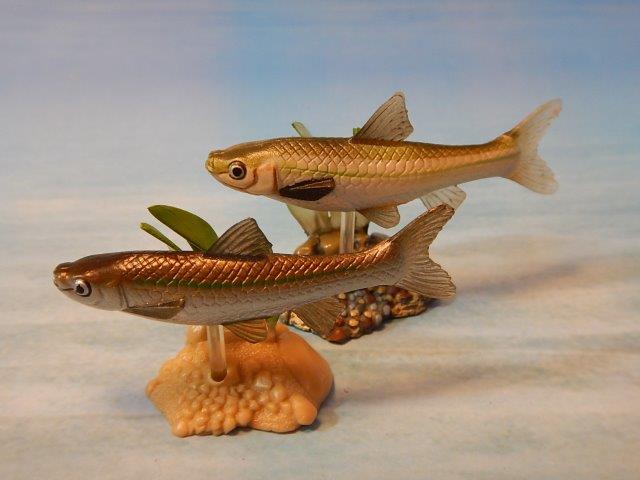
I am not aware of other Willow Shiner models; if they do exist they would likely be from Japan. Possibly from Yujin again, as a strap figure or something!
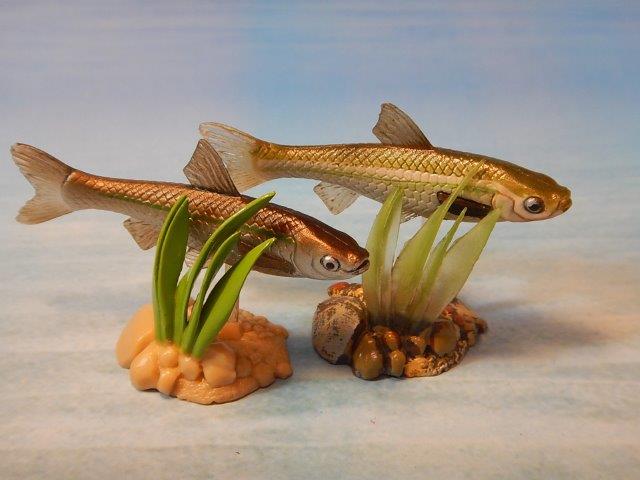
Starting on the 14th of January, 2024, I migrated my first Yujin Freshwater Fish Pictorial walkaround post from the Animal Toy Forum to this blog, with the intention of moving all species’/figures’ walkarounds here. The initial post contained a lengthy explanation of the series (both the original and updated) that I don’t think should be repeated each time! For those details, the post can be seen at the first post. Then we can just get to the fish. Most of the details and writing will come from the original post, although I may supplement/add where appropriate.
Disclaimer: links to Ebay and Amazon on the AnimalToyBlog are affiliate links, so we make a small commission if you use them. Thanks for supporting us!



